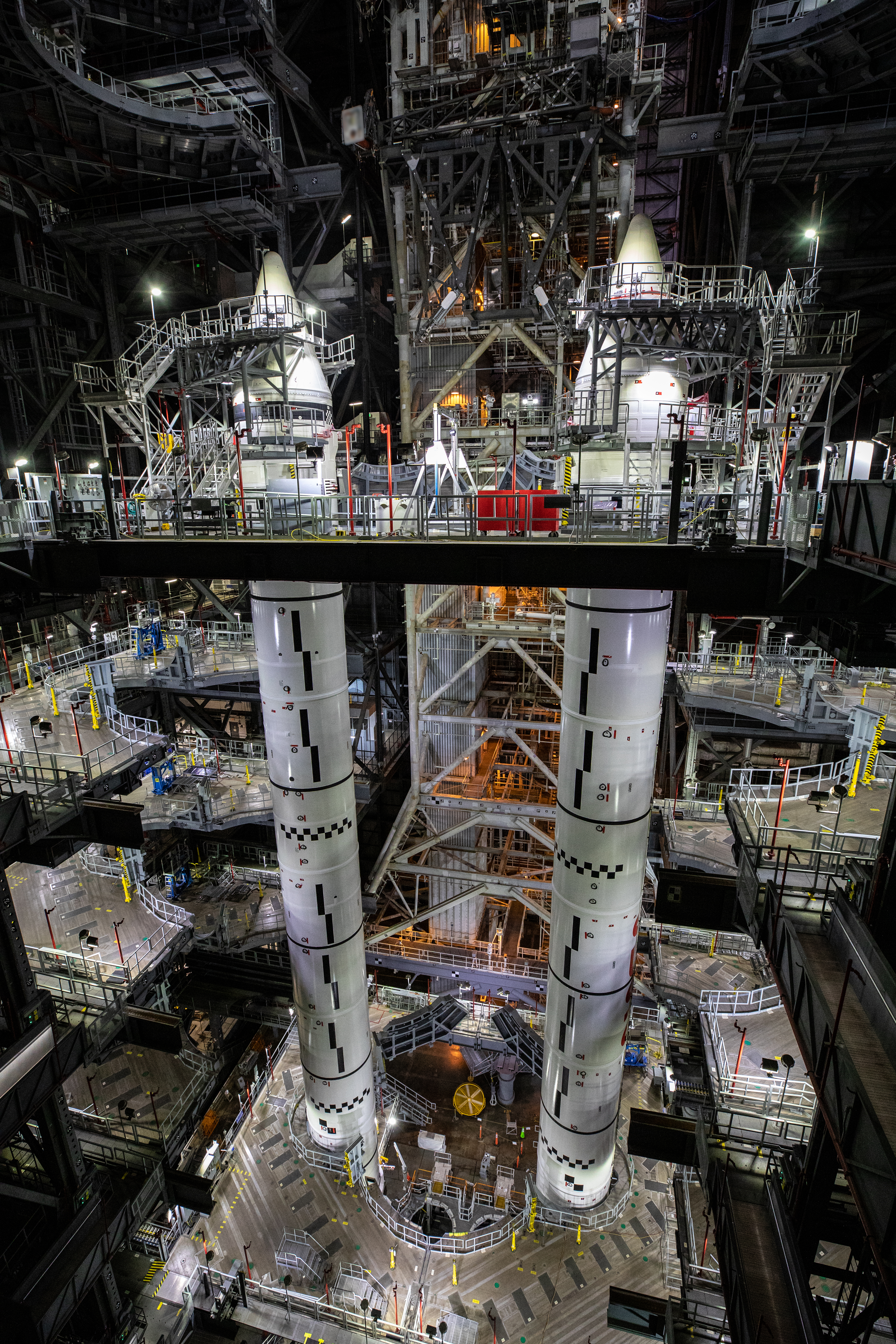Solid rocket booster on:
[Wikipedia]
[Google]
[Amazon]
 A solid rocket booster (SRB) is a large solid propellant motor used to provide
A solid rocket booster (SRB) is a large solid propellant motor used to provide
VLS
HowStuffWorks : Sold Fuel Rocket Engines
* ttps://www.youtube.com/watch?v=PZfrxUgZSuM#t=1m20s NASA CGI video developed for the Ares program showing recovery of solid rocket booster {{DEFAULTSORT:Solid Rocket Booster Boosters (rocketry) Booster
 A solid rocket booster (SRB) is a large solid propellant motor used to provide
A solid rocket booster (SRB) is a large solid propellant motor used to provide thrust
Thrust is a reaction force described quantitatively by Newton's third law. When a system expels or accelerates mass in one direction, the accelerated mass will cause a force of equal magnitude but opposite direction to be applied to that ...
in spacecraft launches from initial launch through the first ascent. Many launch vehicles, including the Atlas V
Atlas V is an expendable launch system and the fifth major version in the Atlas launch vehicle family. It was originally designed by Lockheed Martin, now being operated by United Launch Alliance (ULA), a joint venture between Lockheed Mart ...
, SLS and space shuttle
The Space Shuttle is a retired, partially reusable low Earth orbital spacecraft system operated from 1981 to 2011 by the U.S. National Aeronautics and Space Administration (NASA) as part of the Space Shuttle program. Its official program n ...
, have used SRBs to give launch vehicles much of the thrust required to place the vehicle into orbit. The space shuttle used two space shuttle SRBs, which were the largest solid propellant motors ever built and the first designed for recovery and reuse.
The propellant for each solid rocket motor on the space shuttle weighed approximately 500,000 kilograms..
Advantages
Compared to liquid propellant rockets, the solid-propellant motors SRMs have been capable of providing large amounts of thrust with a relatively simple design. They provide greater thrust without significant refrigeration and insulation requirements, and produce large amounts of thrust for their size. Adding detachable SRBs to a vehicle also powered by liquid-propelled rockets known as staging reduces the amount of liquid propellant needed and lowers the launch rig mass. Solid boosters are cheaper to design, test, and produce in the long run compared to the equivalent liquid propellant boosters. Reusability of components across multiple flights, as in the Shuttle assembly, also has decreased hardware costs. One example of increased performance provided by SRBs is the Ariane 4 rocket. The basic 40 model with no additional boosters was capable of lifting a 4,795 lb. (2,175 kg.) payload to geostationary transfer orbit. The 44P model with 4 solid boosters has a payload of 7,639 lb. (3,465 kg) to the same orbit.Disadvantages
Solid propellant boosters are not controllable and must generally burn until exhaustion after ignition, unlike liquid propellant or cold-gas propulsion systems. However, launch abort systems and range safety destruct systems can attempt to cut off propellant flow by using shaped charges. estimates for SRB failure rates have ranged from 1 in 1,000 to 1 in 100,000. SRB assemblies have failed suddenly and catastrophically. Nozzle blocking or deformation can lead to overpressure or a reduction in thrust, while defects in the booster's casing or stage couplings can cause the assembly to break apart by increasing aerodynamic stresses. Additional failure modes include bore choking and combustion instability. Failure of an O-ring seal on the ''Challenger'' space shuttle's right solid rocket booster led to its disintegration shortly after liftoff. Solid rocket motors can present a handling risk on the ground, as a fully fueled booster carries a risk of accidental ignition. Such an accident occurred in the August 2003 Brazilian rocket explosion at the Brazilian Centro de Lançamento de Alcântara VLS rocket launch pad, killing 21 technicians.See also
* Liquid rocket booster *Solid-fuel rocket
A solid-propellant rocket or solid rocket is a rocket with a rocket engine that uses solid propellants (fuel/oxidizer). The earliest rockets were solid-fuel rockets powered by gunpowder; they were used in warfare by the Arabs, Chinese, Persia ...
* Graphite-epoxy motor
* Comparison of orbital rocket engines
This page is an incomplete list of orbital rocket engine data and specifications.
Current, Upcoming, and In-Development rocket engines
Retired and canceled rocket engines
See also
* Comparison of orbital launch systems
* Comparison of ...
* Space shuttle solid rocket booster
References
External links
HowStuffWorks : Sold Fuel Rocket Engines
* ttps://www.youtube.com/watch?v=PZfrxUgZSuM#t=1m20s NASA CGI video developed for the Ares program showing recovery of solid rocket booster {{DEFAULTSORT:Solid Rocket Booster Boosters (rocketry) Booster